Leche Flan is the ultimate sweet treat! This classic Filipino custard is a guaranteed crowd-pleaser, rich, smooth, and creamy with a golden caramel topping.
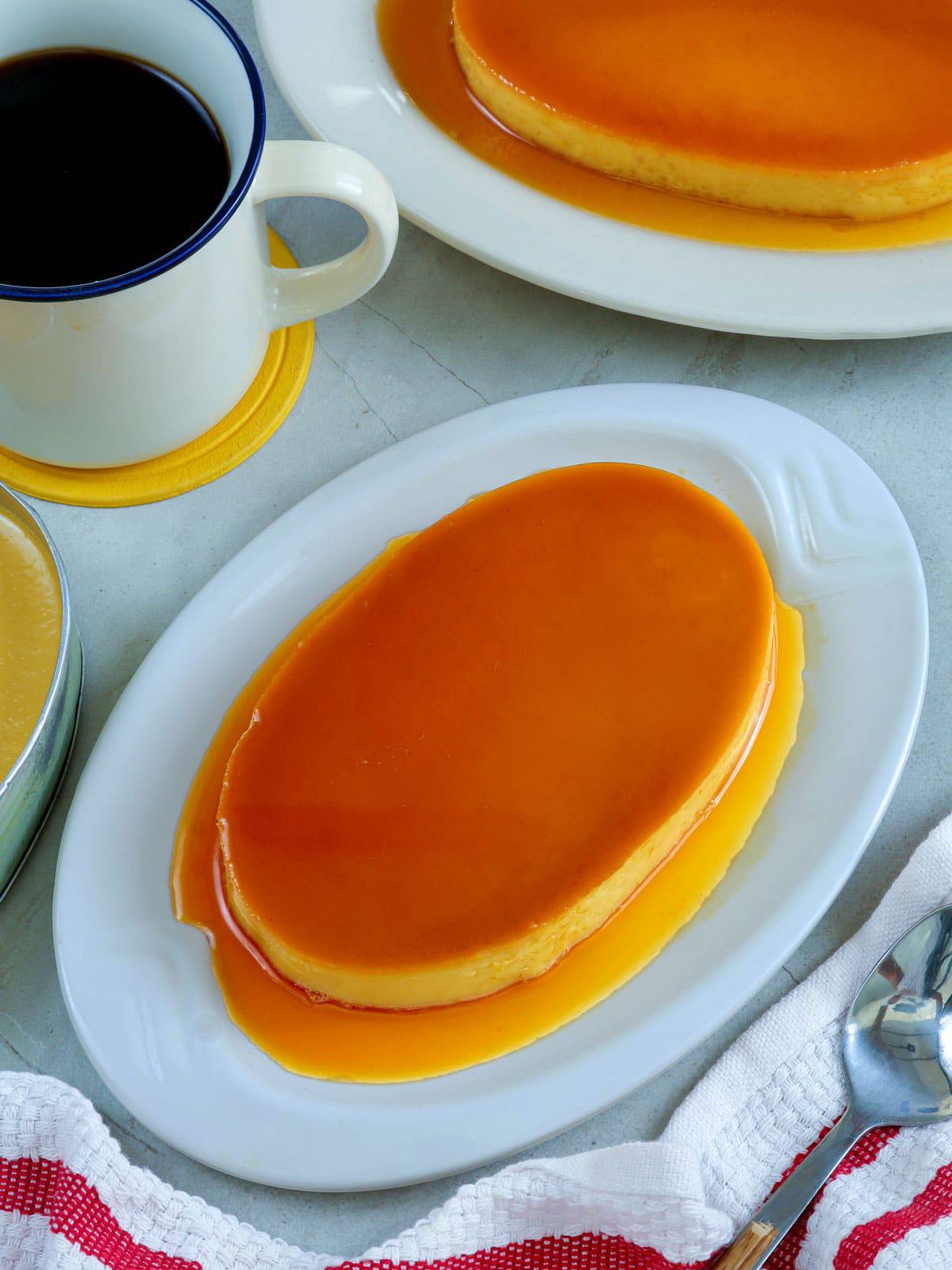
First, let me assure you that this is the smoothest, creamiest, most melt-in-your-mouth leche flan you'll ever have the pleasure of trying. Second, let me go off on a tangent and share a personal story with you.
My ex (husband) wooed me in my youth through llanera upon llanera of leche flan he made himself. Flan was his specialty, and he was so good at it that I was eventually won over by visions of a marriage where I would be sitting on the sofa watching TV while he slaved in the kitchen preparing my dinner.
Well, these visions never quite turned into reality, as I soon found out that caramel custard was how far his kitchen skills went. The way our shared life panned out, he sat on the sofa watching TV while I slaved in the kitchen, preparing HIS dinner. But for every party or gathering, he did take charge of the flan-making while I made everything else.
Fast-forward decades and the marriage had already crumbled. The resident flan maker had long wandered into another's arms, and I found myself standing in the kitchen wanting to make flan but not exactly knowing how. You know how it is when you marry someone and assume it's forever? I never wrote down his recipe because I thought he would always be there to make the leche flan.
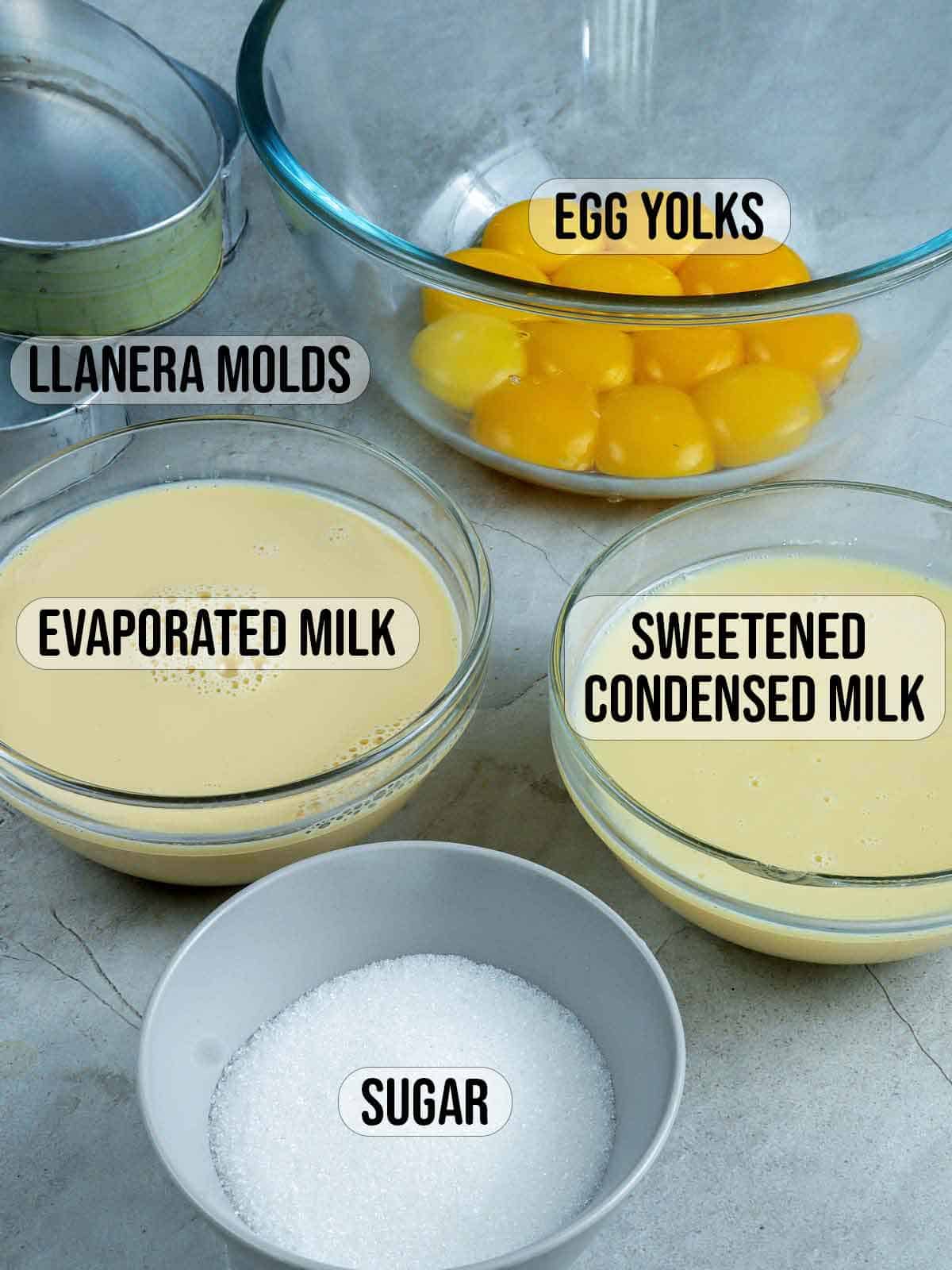
In my divorce, I faced the palpable destruction of what is familiar and endured the arduous process of reconstructing myself. With the mercy of time and tears, I am now a surprisingly happy, independent woman living on her terms and without needing to apologize for the new four-inch stilettos she bought but will probably never wear.
I am now a woman comfortable in her skin. A woman who has come to terms with the furrows on her face that speak of age is no longer compelled to compete with the younger flesh for which she was betrayed. I did not cower when the existence I once knew laid askew, and I certainly will not now cower to the challenge of making flan. Recipe or no recipe, I've watched the man enough times to learn his techniques, and I can surely figure out the measurements of eggs, sugar, and milk quickly on my own.
So today, I made my version. Ha! Victory for the scorned woman, I left his in the dust!
What is Leche Flan
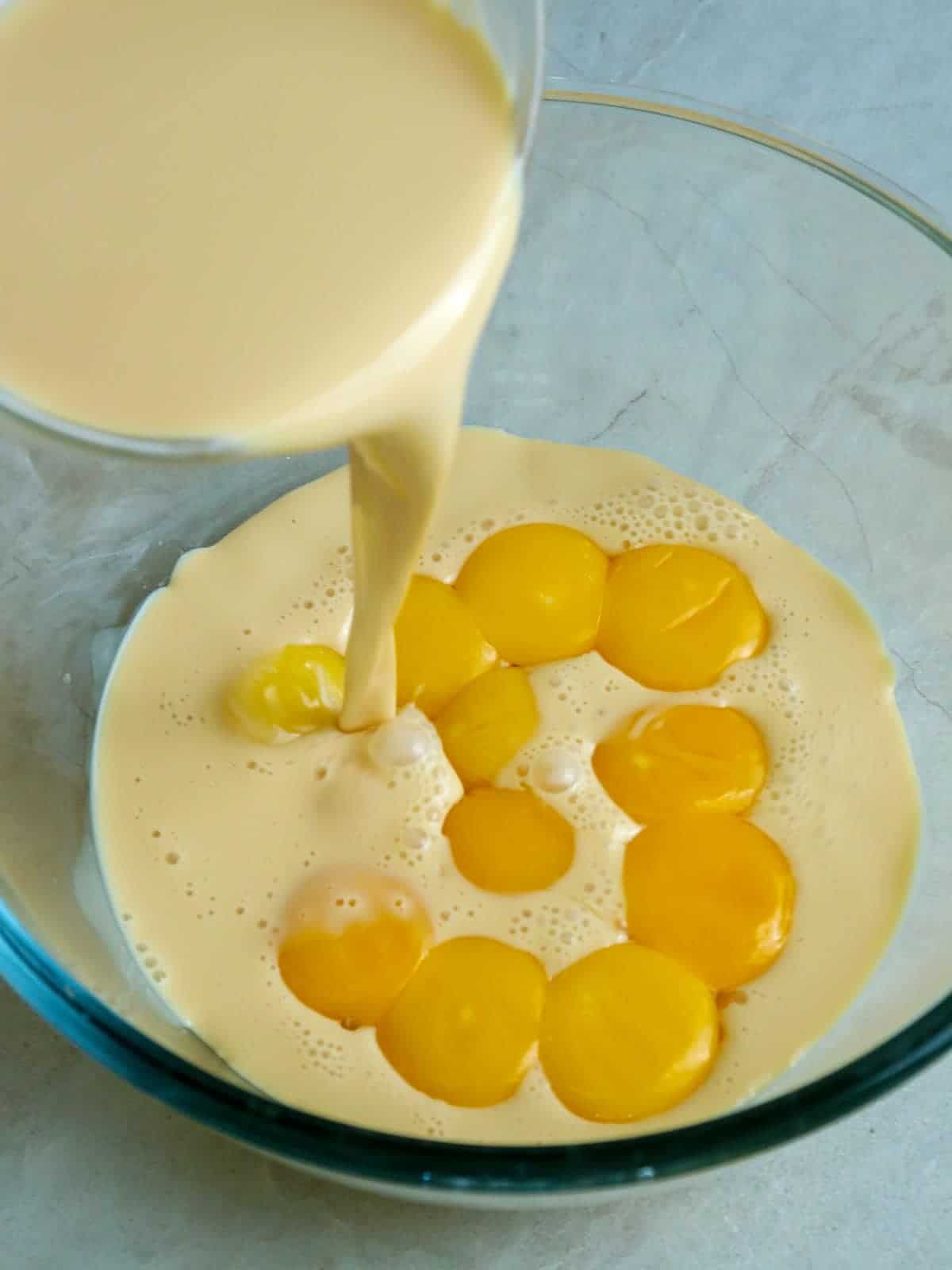
Leche Flan is the Filipino version of creme caramel. It is a sweet dish traditionally served as dessert at parties, fiestas, and other special occasions. It's also commonly used as a topping for shaved ice, such as halo-halo, or as part of different treats, like floating island, impossible choco flan cake, mini egg pies, cassava cake, or graham de leche.
This classic dessert consists of a layer of caramelized sugar and a custard mixture of egg yolks, evaporated milk, and condensed milk. Vanilla extract and key lime or calamansi zest are usually added to brighten the flavor and cut the richness.
The flan is baked in the oven or steamed on the stovetop in oval tin pans called llaneras. After cooking, it's refrigerated to chill and completely set. The mold is inverted on a platter with the caramel sauce ending on top when ready to serve.
Although similar to the Spanish flan, it has a richer taste and denser consistency as it uses all egg yolks.
How to caramelize sugar
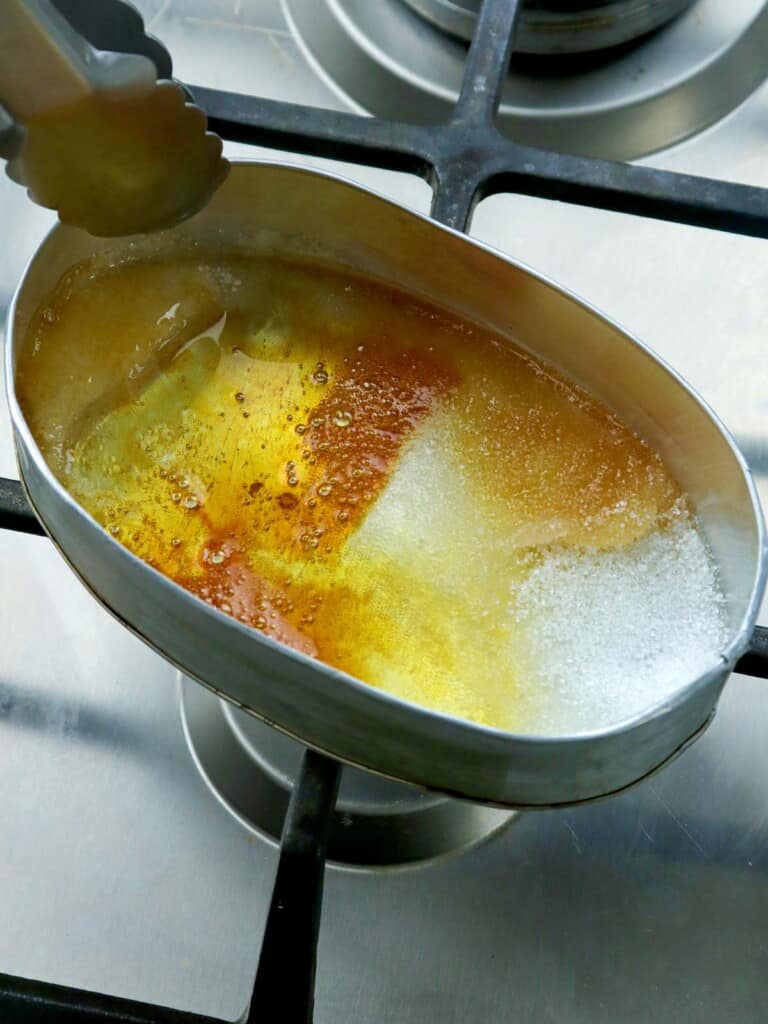
Here are three ways to turn sugar into a golden caramel. Whatever method you use, make sure it's completely melted with no granules left. Tend to it closely to prevent it from burning, which can result in a bitter taste.
Wet method
- Combine one cup of sugar and two tablespoons of water in a heavy-bottomed pan.
- Cook over low to medium heat, constantly stirring with a wooden spoon or silicone spatula, until sugar dissolves and turns to a clear liquid.
- When the sugar dissolves and the syrup simmer, cook without stirring for about 5 to 6 minutes or until the color changes to honey gold. Use the handle to gently tilt the pan off the heat, allowing even browning.
- Pour immediately into molds and allow them to harden.
Dry method
- Place three tablespoons of sugar in each llanera.
- Set the llanera on the stovetop over low heat, and using tongs, move the llanera repeatedly over flames until sugar is melted and turns to honey gold. Continuously tilt and swirl the llanera to ensure even melting and to distribute the liquid on the bottom of the mold.
- Remove from heat and allow caramel to cool and harden.
In the microwave-easiest method!
- In a clear, microwave-safe bowl, combine water and sugar. Stir well under the sugar is completely dissolved.
- Microwave on high for about 6 to 7 minutes or until the color changes to honey gold.
- Pour immediately into molds and allow it to harden.
Making the custard
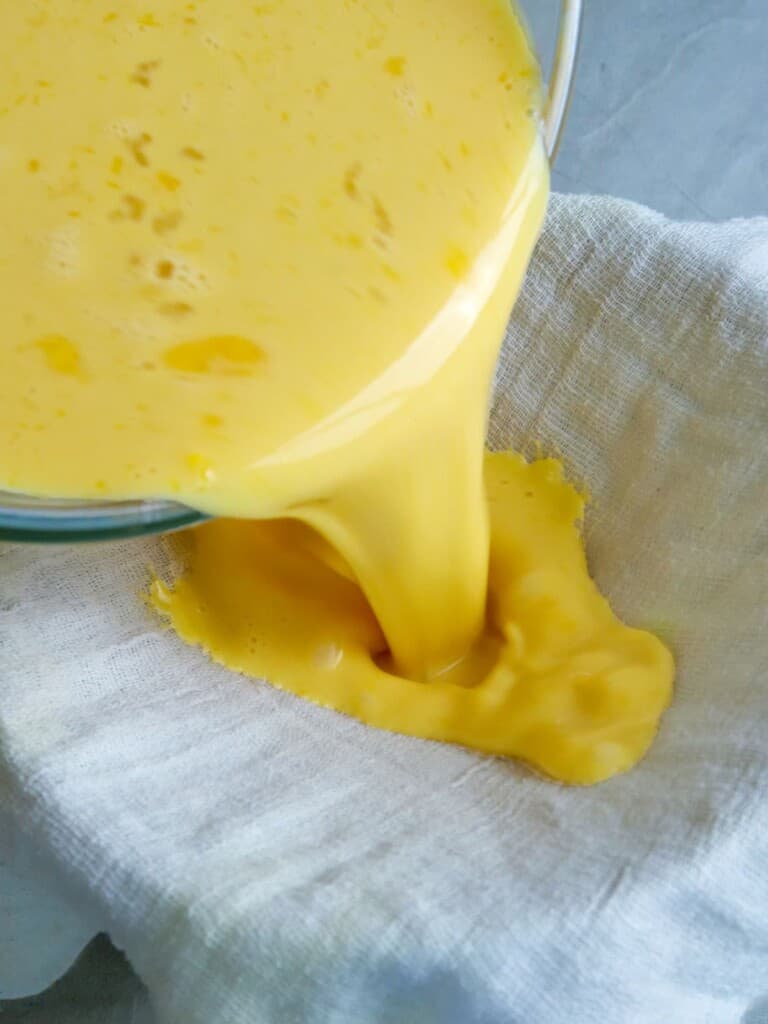
- Use cold eggs as the whites and yolks hold their shape better and separate more easily.
- Prepare the custard mixture as soon as the eggs are separated, as the yolks will form an outside skin when exposed to the air for too long. If unable to use the yolks immediately, store them in a bowl of water and refrigerate them. Drain when ready to use.
- Breaking the yolks can be a little tricky when they're swimming in liquid milk. To make it easier, stir them with the condensed milk before adding the evaporated milk.
Techniques for a smooth consistency
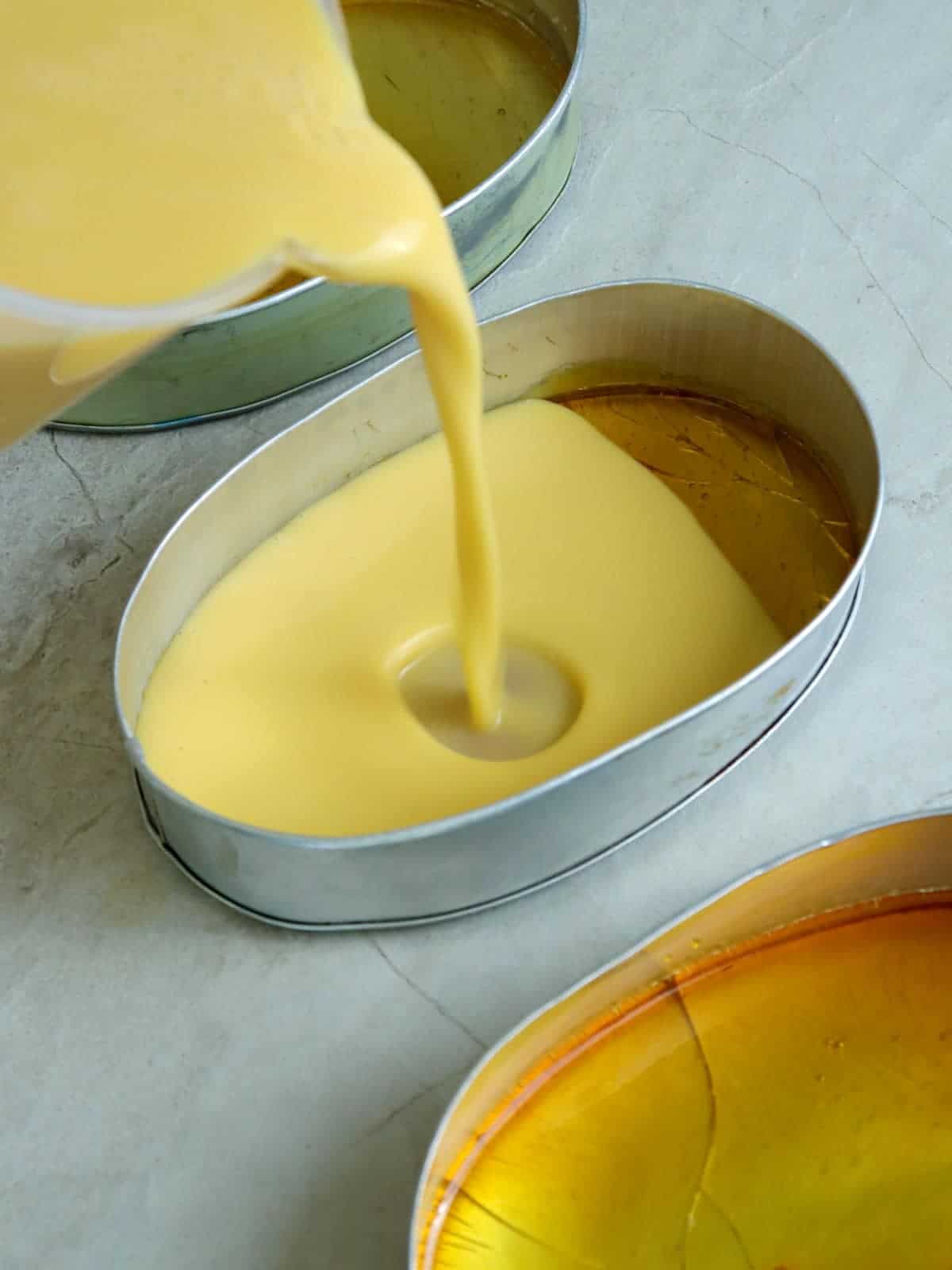
- Stir in one direction to prevent introducing too much air into the mixture, which will cause holes in the flan when cooked.
- Tap the llanera on the counter a few times and let it stand for a few minutes to release the trapped air pockets.
- If the mixture appears foamy, let it stand for a few minutes for the bubbles to subside.
- To ensure a smooth, silky consistency, strain the mixture using a cheesecloth or fine-mesh sieve to remove stray egg whites or froth.
- Do not steam or bake at too high a temperature. Use a water bath or bain marie to ensure the temperature rises slowly and the custard thickens gradually.
- Do not overcook. The flan is done when a toothpick inserted into the center comes out clean.
Oven vs. Stovetop
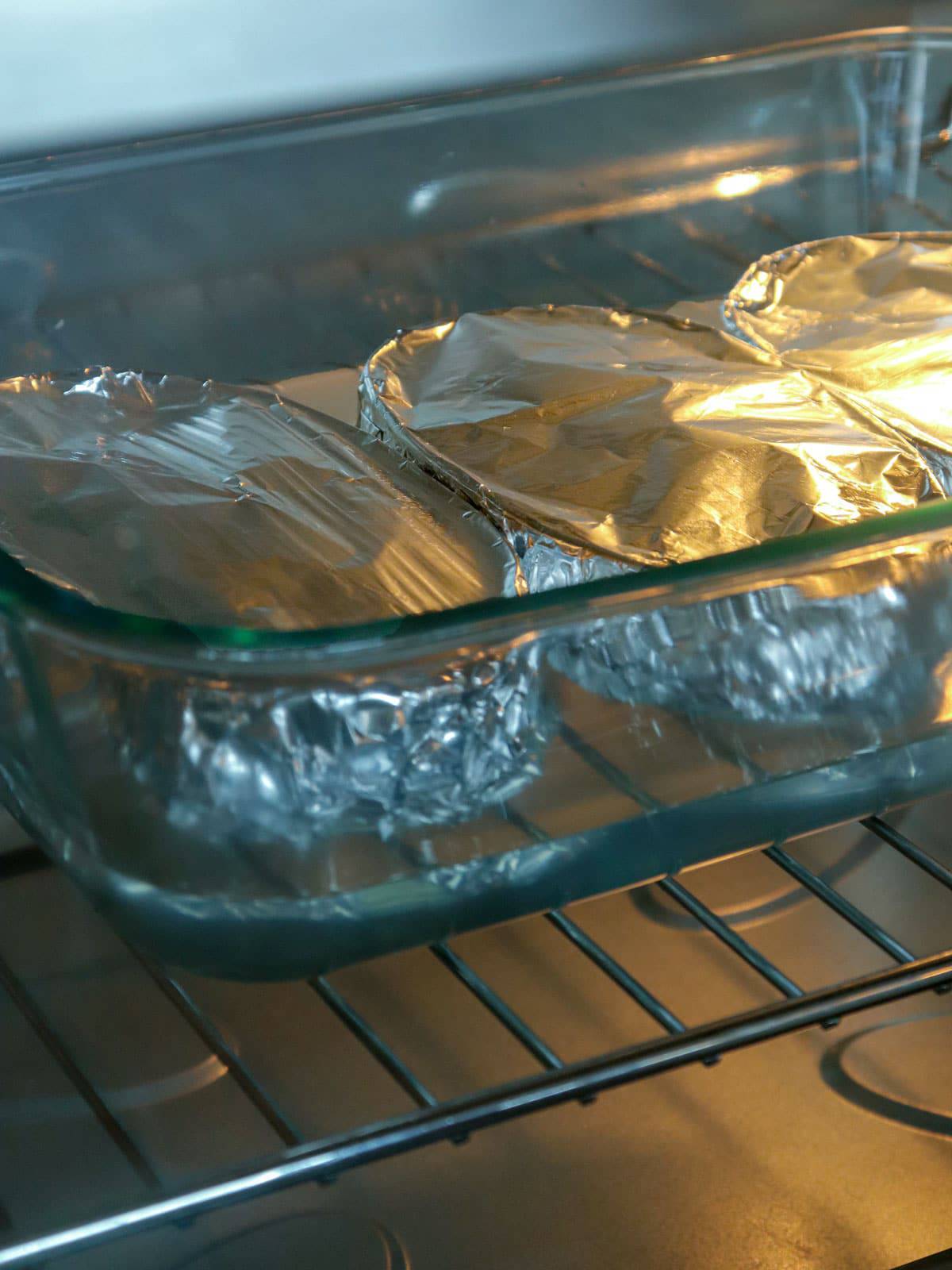
- I find baking the flan in the oven using a water bath yields a velvety smooth texture and provides a gentle and even cooking temperature.
- If steaming on the stovetop, cook low and slow to prevent overheating or overcooking the custard, which may result in a coarse consistency.
Quick tip
Leche flan is traditionally cooked in llaneras. If unavailable, you can use a round cake or bundt pan. Small ramekins or muffin tins will also work for individual servings. You can cook the caramel in a saucepan and pour it into the baking dish of choice.
How to serve and store
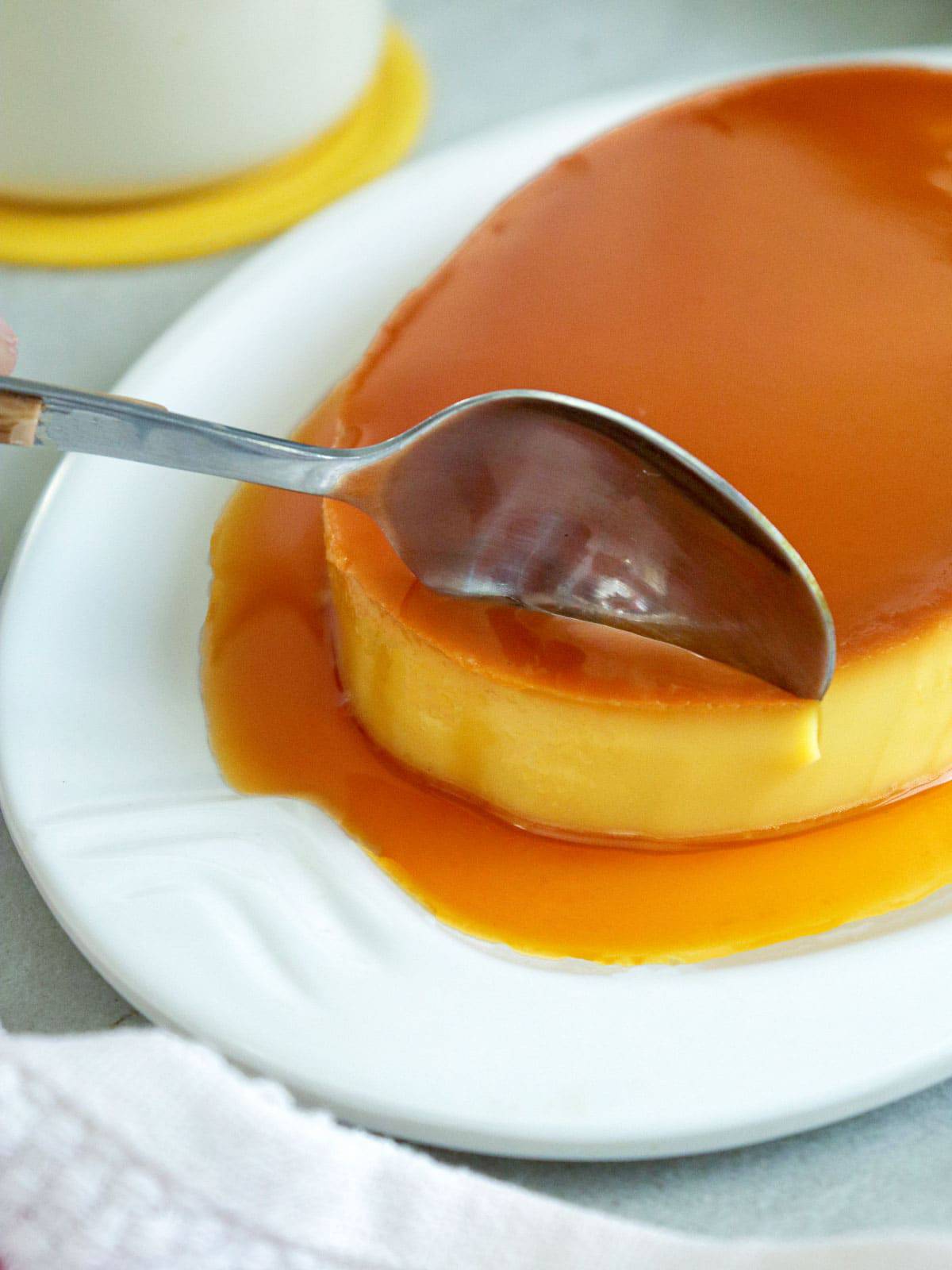
- Leche flan is traditionally enjoyed chilled. It can be served as an after-meal dessert, a midday snack, or a topping for iced desserts such as halo-halo or mais con hielo.
- Store in the refrigerator for up to 3 days. To extend freshness, keep it in the llanera covered in foil.
- To freeze, transfer in an airtight container and keep in the freezer for up to 1 month. To serve, thaw overnight.
More flan recipes
Ingredients
- 9 tablespoons sugar
- 12 egg yolks, from large eggs
- 1 can (14 ounces) sweetened condensed milk
- 1 can (12 ounces) evaporated milk
Equipment
- 3 llanera molds
Instructions
- Preheat oven to 375 F.
- Place 3 tablespoons of sugar in each of the three llaneras.
- Set llanera on the stove over low heat and using tongs, move repeatedly over flames until sugar is melted and turns into a golden liquid.
- Continuously tilt and swirl the llanera to ensure even melting and to distribute the liquid on the bottom of the mold. Remo
- Remove from heat and allow caramel to cool and harden. Repeat the process with the remaining llanera.
- In a bowl, combine egg yolks and condensed milk. Stir to combine.
- Add evaporated milk, gently stirring in a circular motion until blended.
- Using a cheesecloth or fine-mesh sieve, strain egg-milk mixture to remove stray egg whites.
- Pour mixture into prepared llaneras and cover tighly with foil Arrange in a a wide, oven-safe dish with about 1-inch of water (bain marie or water bath)..
- Bake in the oven for about 50 minutes to 1 hour or until a toothpick inserted in the middle of custard comes out clean.
- Remove from oven, allow to cool, and refrigerate to chill and completely set.
- To serve, turn flan over on a serving plate, ending with caramel on top.
Notes
- Use cold eggs as the whites and yolks hold their shape better and separate more easily.
- Prepare the custard mixture as soon as the eggs are separated, as the yolks will form an outside skin when exposed to the air for too long. If unable to use the yolks right away, store them in a bowl of water and refrigerate them. Drain when ready to use.
- Breaking the yolks can be a little difficult when they're swimming in liquid milk. You can make it easier by stirring them with the condensed milk before adding the evaporated milk.
- Stir in one direction to keep from introducing too much air in the mixture as it will cause holes in the flan when cooked.
- Tap the llanera on the counter a few times and let it stand for a few minutes to release the trapped air pockets.
- If the mixture appears foamy, let it stand for a few minutes for the bubbles to subside.
- To ensure a smooth, silky consistency, strain the mixture using a cheesecloth or fine-mesh sieve to remove stray egg whites or froth.
- Do not steam or bake at too high a temperature. Use a water bath or bain marie to ensure the temperature rises slowly, and the custard thickens gradually.
- Do not overcook. The flan is done when an insert a toothpick in the center comes out clean.
- Leche flan is traditionally cooked in llaneras. If unavailable, you can use a round cake or bundt pan. Small ramekins or muffin tins will also work for individual servings. You can cook the caramel in a saucepan and pour it into the baking dish of your choice.
Video

Nutrition Information
“This website provides approximate nutrition information for convenience and as a courtesy only. Nutrition data is gathered primarily from the USDA Food Composition Database, whenever available, or otherwise other online calculators.”

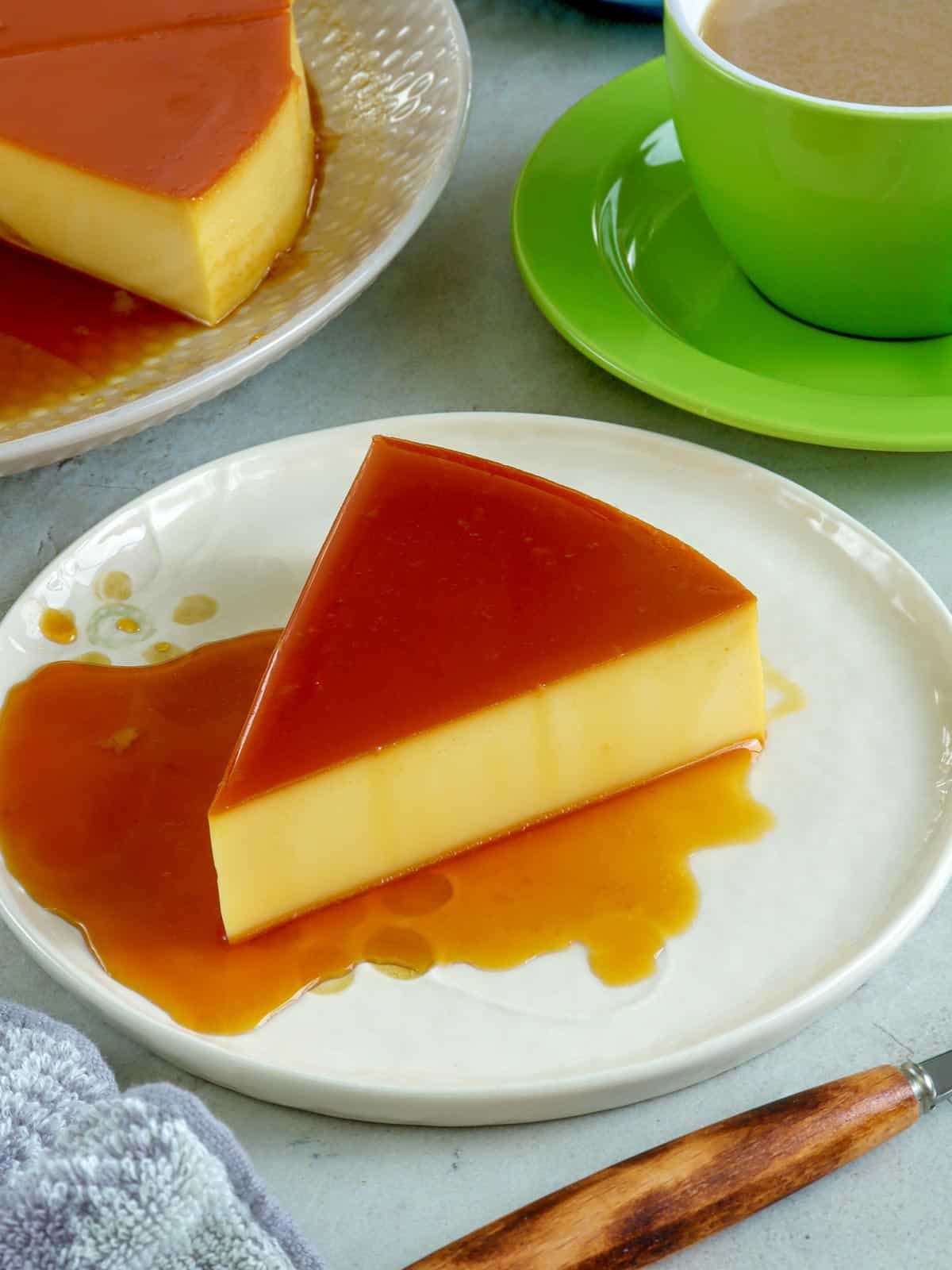
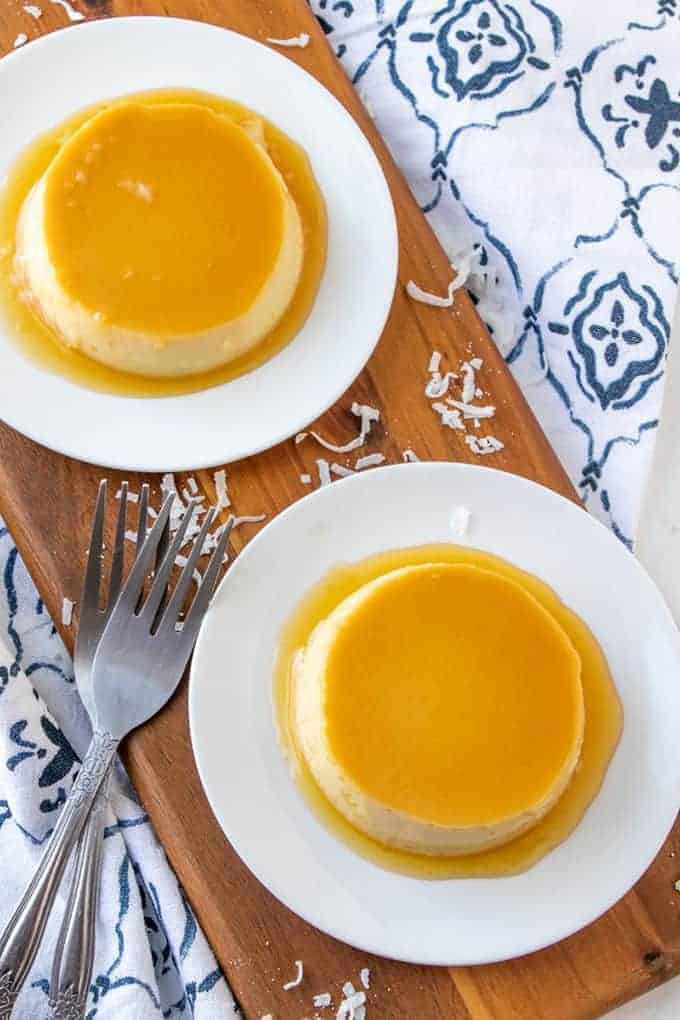
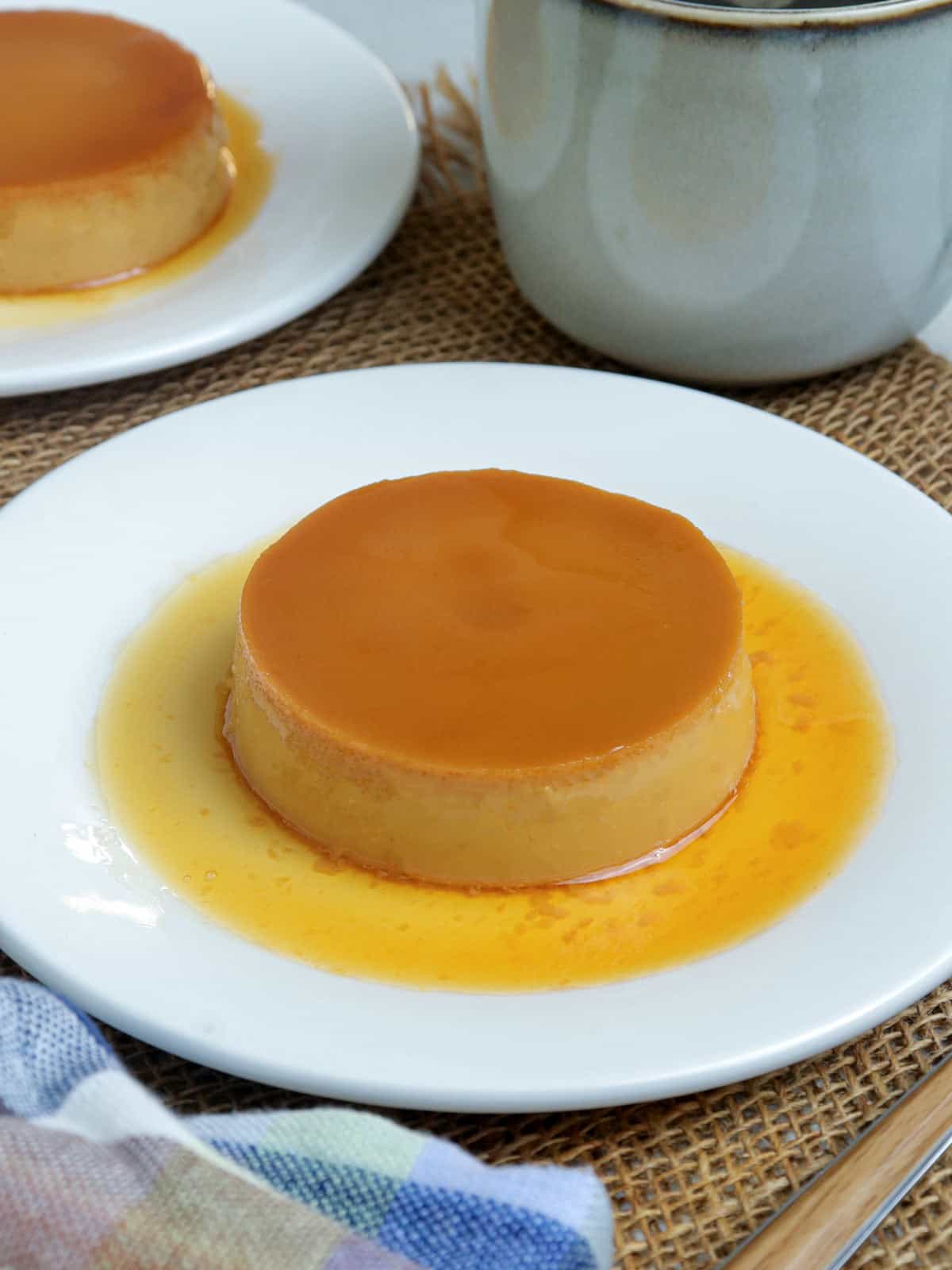
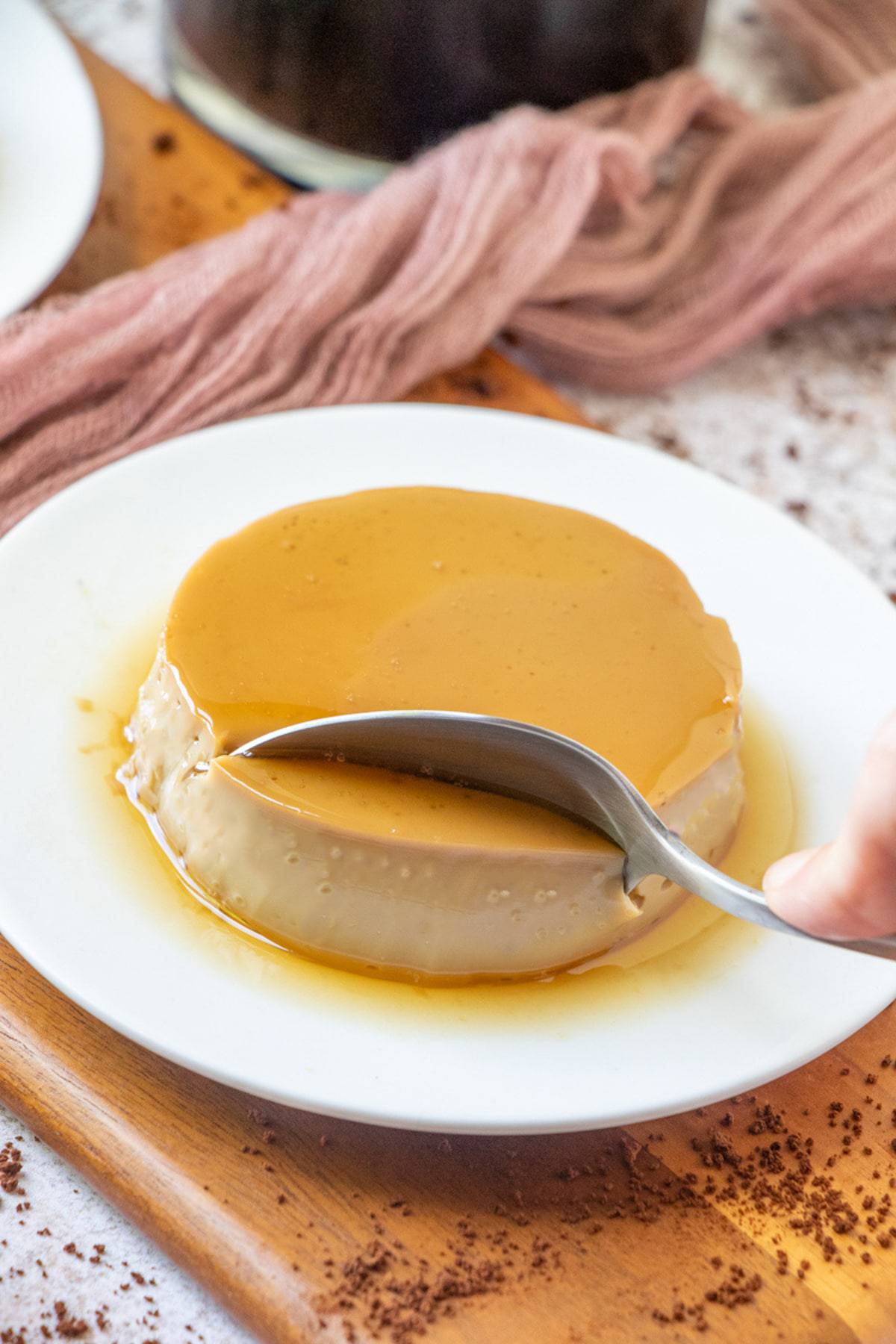
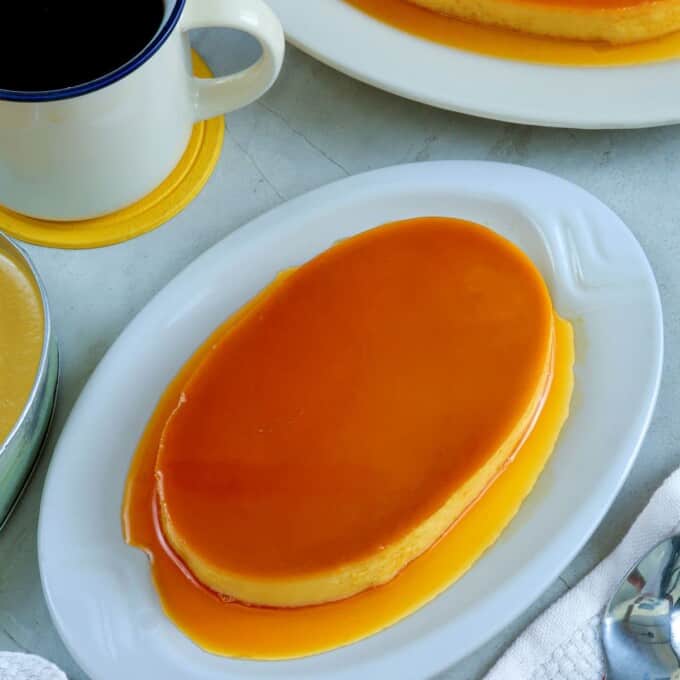
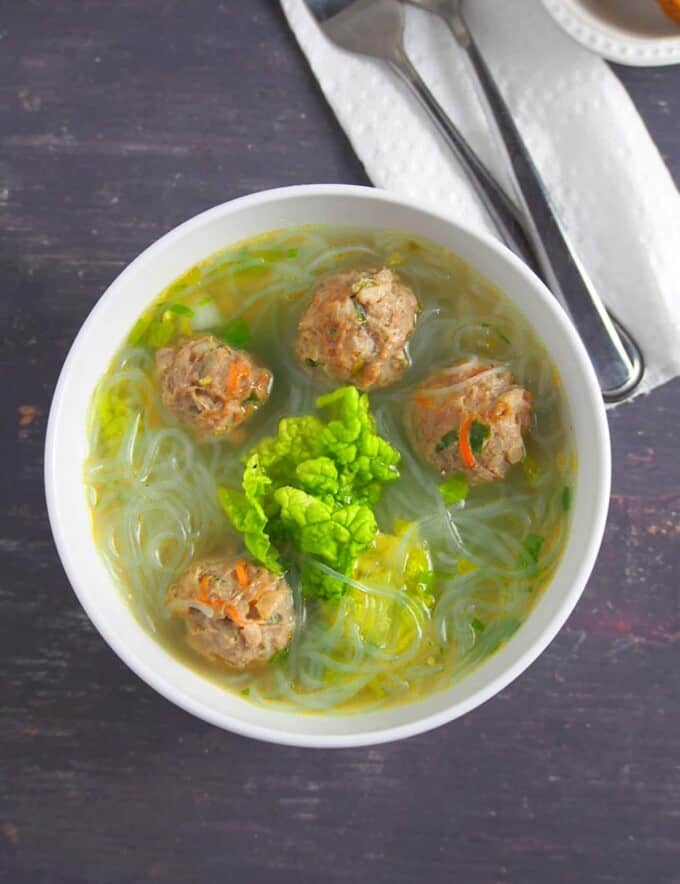
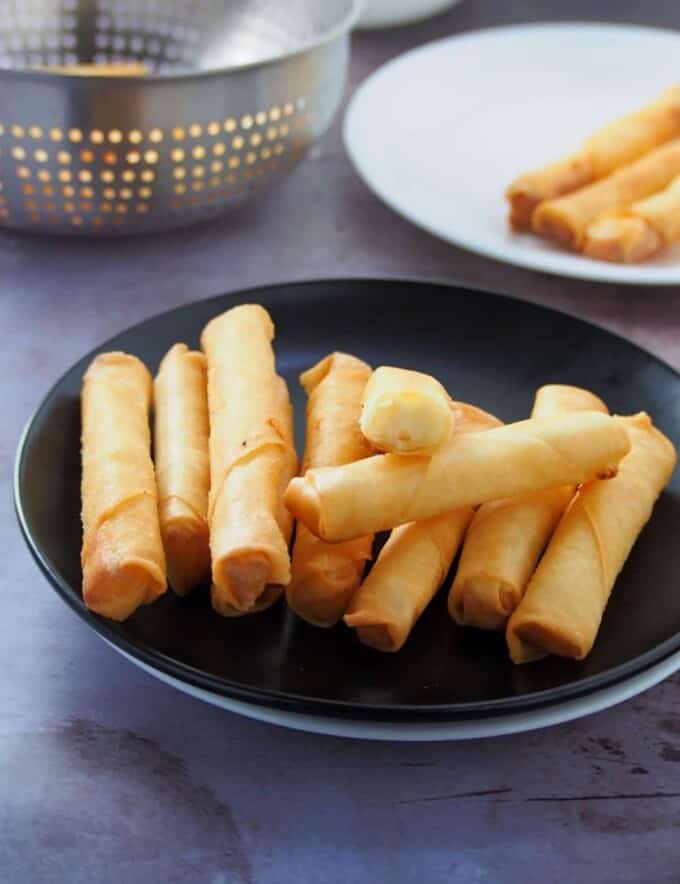
Heidi says
Girlfriend, you didn't mention to add water into the sugar!!! Your video and instructions didn't include water with the sugar. It took me more than 20 minutes to melt the sugar in my 3 foiled llaneras. The mixture is good which is a breeze. The sugar part of it which is supposed to be the easy one turned into a nightmare!. Kindly update your recipe. I would appreciate it.
Lalaine Manalo says
I am sorry for the confusion, but we don't put water when we caramelize the sugar. This is a dry method, melt it on the stovetop slowly on low heat. It will take a while but it results in a smoother, less grainy caramel than the wet method where you add water.